
As a vital component in the solar energy system, the solar charge controller is not only responsible for regulating the energy flow between the solar panels and the battery, but also plays an important role in the inverter. Solar charge controllers are divided into two types: MPPT and PWM. Choosing the right MPPT solar charge controller and PWM solar charge controller is essential to improve the operating efficiency of the system, extend the battery life, and ensure the efficient operation of the inverter.
The solar charge controller is device placed between the solar panel and the battery pack to control the electricity generated by the solar panel into the battery, and control the battery to power the solar inverter load at the same time. It needs to coordinate the work of the solar panel, battery, inverter and load to ensure the stable operation of the entire solar off-grid power system.
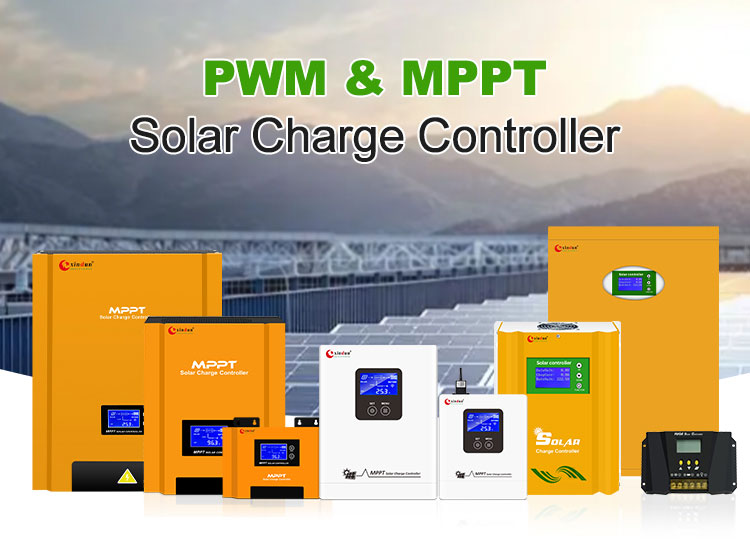
MPPT solar charge controller stands for Maximum Power Point Tracking, which we generally call solar charge and discharge controller or solar controller. It is device used to control solar panels to charge batteries and provide load control voltage for voltage-sensitive devices. It is suitable for power supply systems of communication or monitoring equipment in remote areas. Its working principle is that the output power of solar panels will change with light intensity, temperature and load conditions, and its output characteristic curve is nonlinear, with maximum power point. MPPT solar charge controller can track this maximum power point in real time, and through the coordinated operation of intelligent algorithms and electronic circuits, it continuously adjusts the working voltage and current of solar panels, so that the panels always work in the state of maximum output power, thereby improving the power efficiency of the entire solar system. It can not only manage solar panels to charge batteries, but also ensure that batteries provide stable power output for solar inverters.
PWM solar charge controller stands for Pulse Width Modulation, which is an analog control method that modulates the bias of the transistor base or MOS tube gate according to the change of the corresponding load to achieve the change of the transistor or MOS tube conduction time, thereby achieving the change of the output of the switching regulated power supply. It is suitable for solar panel charge controllers with power less than or equal to 100W. Its working principle is to gradually adjust the current delivered to the battery by adjusting the voltage output by the solar panel. When the battery is close to fully charged, the PWM solar charge controller regulator will reduce the current received by the battery to avoid overcharging. Specifically, it does this by adjusting the "pulse width" of the battery charge. The controller will periodically switch the current flow on and off, and control the current intensity by reducing the "on" time, thereby preventing the battery from charging too quickly.
1. Control method
PWM controls the current by adjusting the ratio of output voltage to battery voltage, while MPPT gradually increases the modulated output voltage to find and maintain the optimal working point of the solar panel to achieve maximum output power.
2. Efficiency and performance
PWM controller has relatively low working efficiency because it cannot fully utilize the maximum power output of the solar panel, and can only achieve charging conversion efficiency of 70-80% at most;
MPPT controller is more efficient, can monitor the voltage and current of the solar panel in real time, and track the maximum power point (P=U*I), so that the system can charge the battery with maximum power output, with a tracking efficiency of up to 99%, and the power efficiency of the entire system is as high as 97%, which is about 50% higher than that of the traditional system.
3. Applicable scenarios
PWM controller is suitable for scenarios with high system cost requirements and low efficiency requirements. Due to its relatively simple control strategy, the cost of PWM controller is low, and it is suitable for some low-cost, small-scale solar power systems.
MPPT controller is more suitable for scenarios with high system efficiency requirements. In scenarios with high efficiency requirements such as large-scale solar power stations and distributed solar power systems, MPPT controllers can give full play to their advantages and improve the overall power efficiency of the system.
4. Working mechanism
The PWM control mechanism is relatively simple. It controls charging by comparing the battery voltage with the load voltage and controlling the ripple of the battery voltage within a certain range. This method is low cost, but not efficient.
MPPT calculates the output power by detecting the output voltage and current of the solar panel in real time, and dynamically adjusts the output voltage of the control circuit according to the power demand to maintain the solar panel working at the maximum power point.
5. Advantages and disadvantages
PWM is suitable for low-power charging controllers due to its simplicity and low cost. However, its efficiency is low and it cannot achieve the maximum power output of the solar panel. In addition, PWM control may affect battery life and generate large noise. Although MPPT is more expensive, it can achieve maximum power output, has less impact on battery life, and provides more functions through intelligent management.
When choosing the best solar charge controller for your inverter system, it is important to consider factors such as system size, efficiency requirements, budget, and specific application requirements. Below, we will recommend three of Xindun's most popular solar charge controllers:
Battery Voltage: DC12V/24V/48V
Output: 10A/20A/30A/40A/50A/60A
Feature:
1.The constant current, constant voltage, and floating charge three-stage charging mode are adopted to ensure more stable battery charging process and avoid overcharging, thereby effectively extending the battery life.
2. The PWM solar controller is not only economical, but also has a compact design, which can save installation space and has a low cost.
3. The controller can automatically detect and adjust to the appropriate battery voltage (12V or 24V), which simplifies the installation process, reduces the complexity of user operation, and ensures that the battery obtains the correct charging current.
4. Compatible with valve-regulated lead-acid batteries, gel batteries, open lead-acid batteries, and AGM batteries, providing more options to meet the needs of different systems.
5. It has multiple safety guarantees such as overcharge, over-discharge, overload, short circuit, reverse connection, overheating and lightning protection to ensure stable operation of the system, minimize the risk of equipment damage, and enhance user confidence.
6. Support multiple load working modes, allowing users to optimize and adjust the system according to actual needs, so as to efficiently manage power output and ensure that the system always maintains the best operating state according to different loads.
KY1 series PWM solar charge controller for inverter:
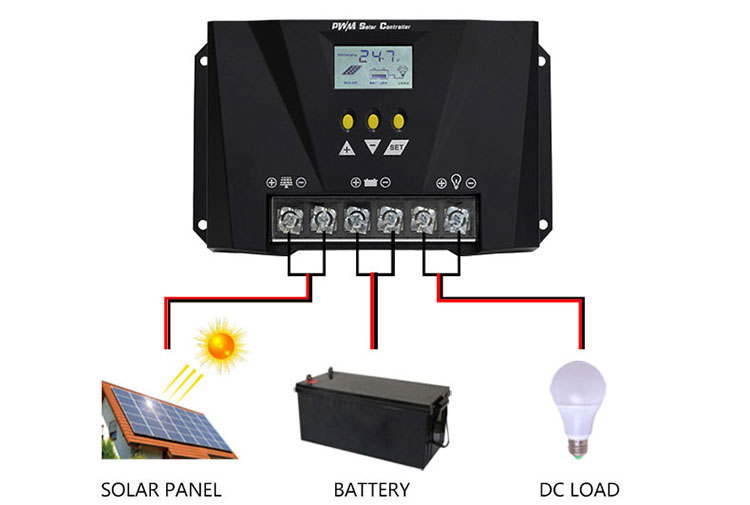
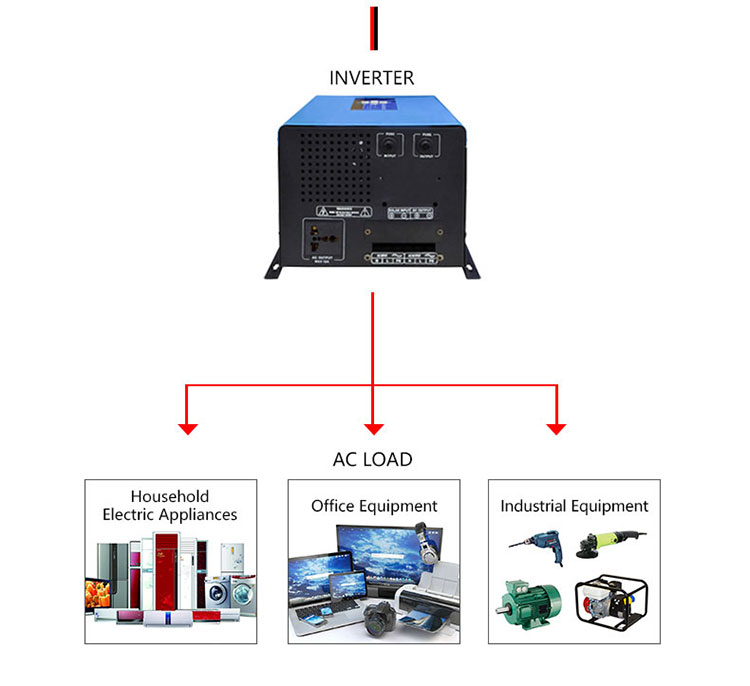
Battery Voltage: DC12V/24V/48V/96V/192V/216V/240V384V
Output: 10A/20A/30A/40A/50A/60A/80A/100A
Feature:
1.Adopting advanced MPPT tracking technology, its tracking efficiency is as high as 99%, which can significantly improve the efficiency of solar power compared with PWM controller.
2.MPPT controller can provide about 20% higher power generation efficiency than PWM controller, improving overall energy efficiency and power output.
3.MPPT automatically identifies battery voltage (12V, 24V, 48V), which simplifies the installation process and ensures that the battery is always in the best charging state.
4.MPPT controller provides wide input voltage range, which can flexibly configure the solar system according to actual needs.
5.MPPT controller is compatible with lithium batteries, provides efficient charging, and ensures that the battery gets the best charging effect.
6.Equipped with intelligent battery management function, it can monitor the battery status in real time and adjust the charging strategy, extend the battery life, and reduce maintenance frequency and cost.
7.Provide RS485 communication interface, support remote monitoring and data transmission, so that users can view the system operation status in real time and optimize management and maintenance operations.
8.MPPT controller supports parallel operation, which is convenient for you to expand the system capacity when needed to adapt to larger loads or add more solar panels.
Wonder 1 series MPPT solar charge controller for inverter:
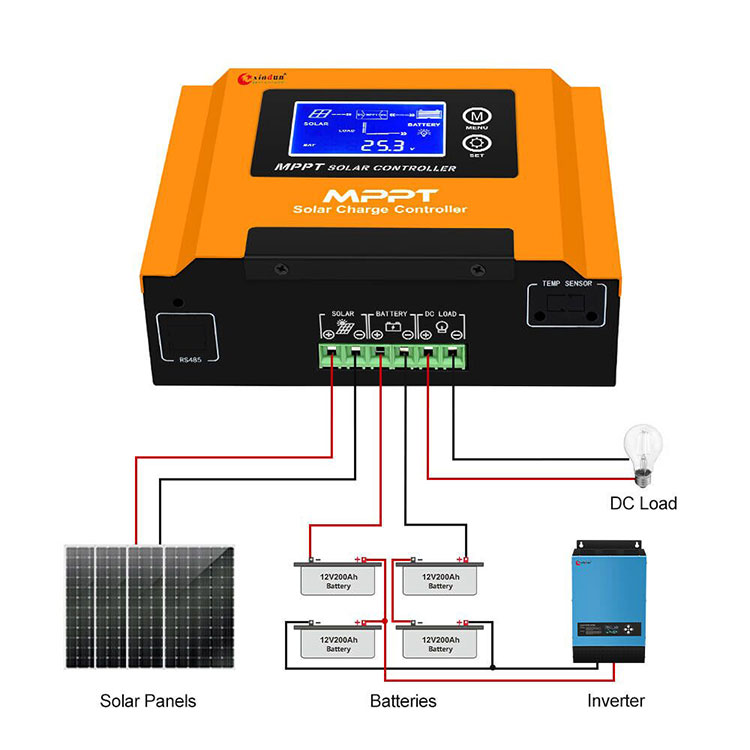
Battery Voltage: DC12V/24V/48V/96V/192V/216V/240V384V
Output: 10A/20A/30A/40A/50A/60A/80A/100A
Feature:
1. Supports ultra-wide solar input voltage (80V-120V), which simplifies system configuration.
2. The MPPT controller supports a variety of adjustable load working modes to meet the power requirements of different application scenarios, ensuring that the solar system can operate efficiently and stably in various environments.
3. The MPPT solar controller has lithium battery activation function, which can effectively activate the battery and extend its service life. It is also equipped with charging protection function to ensure that the battery is not damaged during the charging process.
4. It adopts advanced MPPT tracking algorithm with tracking efficiency of up to 99%, ensuring that the system can maximize the utilization of solar energy, and improves the power efficiency by about 20% compared with ordinary PWM controllers.
5. Equipped with RS485 communication interface (compatible with Mod Bus protocol), and can be remotely monitored and managed through mobile phone APP, so that users can check the system status at any time, optimize and maintain in real time, and improve the use experience and management efficiency.
6. Equipped with comprehensive protection functions, including battery reverse connection protection, PV reverse connection protection, charging overcurrent, DC output overcurrent, overtemperature, overvoltage and undervoltage protection, to enhance the safety and reliability of the system.
Wonder 2 series MPPT solar charge controller for inverter:
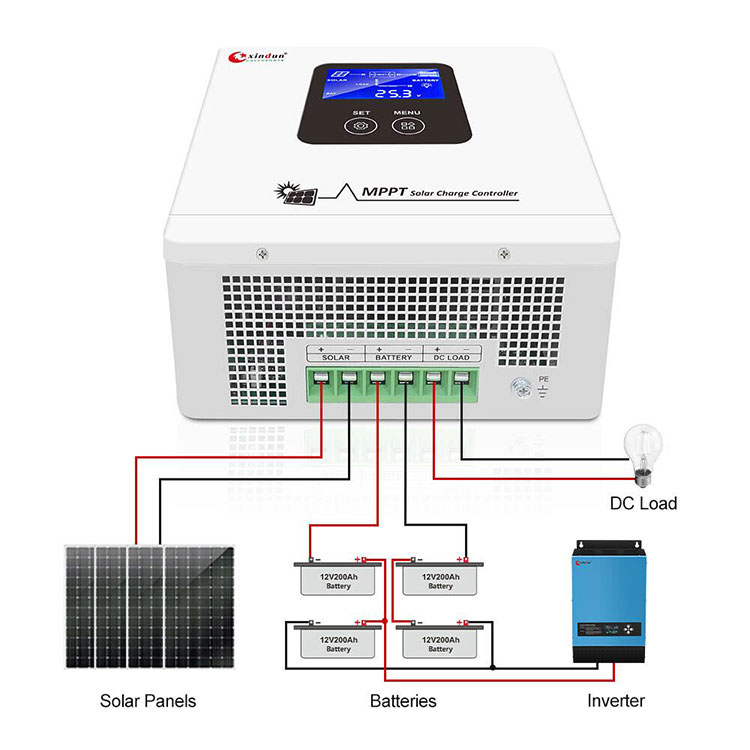
Xindun has been specialized in producing solar controllers for nearly 20 years. We have a R&D team of more than 30 people and modern production plant of more than 10,000 square meters. We are the most trustworthy solar controller manufacturer. Our MPPT solar charge controller and PWM solar charge controller are provided to importers, wholesalers, distributors and traders in more than 100 countries around the world to help them expand their business. Our solar controllers have obtained ISO9001:2015, ISO 14001:2015, CE and other international certifications, and meet national solar product standards. At the same time, we also produce solar inverters, batteries, solar systems and other solar products used with solar controllers. You don't have to worry about product quality and service issues when cooperating with Xindun. If you are interested in MPPT and PWM solar charge controller, please contact us.